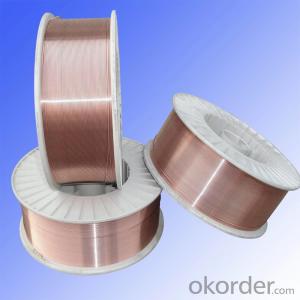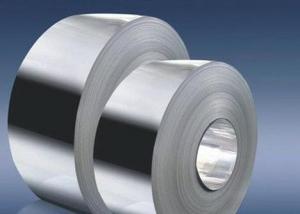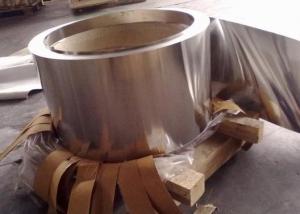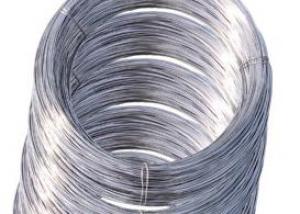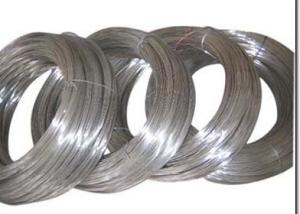Brass Steel Welding Wire/ Strip for Construction
- Loading Port:
- Qingdao
- Payment Terms:
- TT or LC
- Min Order Qty:
- 10 m.t.
- Supply Capability:
- 1000 m.t./month
OKorder Service Pledge
OKorder Financial Service
You Might Also Like
Brass Steel Welding Wire/ Strip for Construction
Main Structure for Brass Steel Welding Wire/Strip
AWS A5.18 ER70S-6
1) Copper coated
2) All position welding
3) Shield gas : CO2
4)Material: Carbon Steel
5)Diameter: 0.8mm-1.6mm
6)Weight: 15kg/spool, 100kg/barrel, 250kg/barrel
7)Flux Content: Without flux
8)Shield GAS: CO2
ER70S-6 is a coppered low alloy steel wire with all position welding.The wire has a very good welding performance and the weld metal shows lower temperature impact toughness. It is mainly for butt and fillet welding structures made by shipping steel and low alloy steel, such as ships , containers, as well as vehicles,engineering and construction machineries, bridges etc.
Datas of Brass Steel Welding Wire/ Strip for Construction:
C | Mn | Si | S | P | Ni | Cr | Mo | V | Cu | |
Standard | 0.06-0.15 | 1.40-1.85 | 0.80-1.15 | ≤0.035 | ≤0.025 | ≤0.15 | ≤0.15 | ≤0.15 | ≤0.03 | ≤0.50 |
Typical | 0.078 | 1.53 | 0.85 | 0.01 | 0.011 | 0.029 | 0.022 | 0.008 | 0.010 | 0.12 |
All products of welding wire were produced by German equipment.
Advanced technologies with advanced equipment.
Main Features for Brass Steel Welding Wire/ Strip for Construction:
Gas-shielded welding wires utilize Co2,argon-rich gas and argon gas as the shielding gases with high production efficiency.Large current may be used during welding to achieve droplet transfer,wiht large melting coefficient of wire, excellent depth of welding penetration on material, little melting residues,high-density current, concentrated heat, small heating area, little distortion of work pieces after welding, etc.
Because of low content of hydrogen in the seam,cold cracking is rare. Good visibility of electric arc facilitates full-position welding and welding at other positions.
Main Applications for Brass Steel Welding Wire/ Strip for Construction:
Welding of various 500Mpa structural steel components;welding of various 500Mpa plates and pipes;full-position welding with a wide range of current.
FAQ:
Why Should You Choose Us?
One-stop purchase service with full set of production line to save your time, cost and energy
Competitive price,Superior quality, Excellent logsitics and Strong finance ability
Professional service team
Picture:
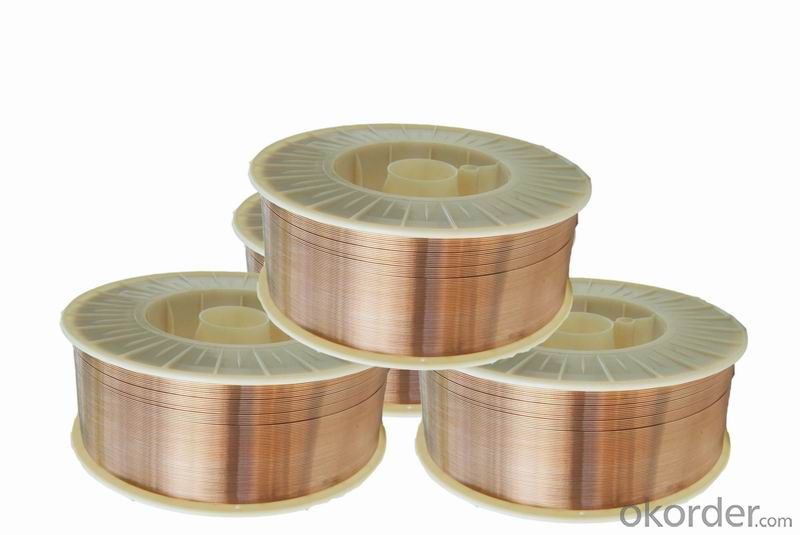
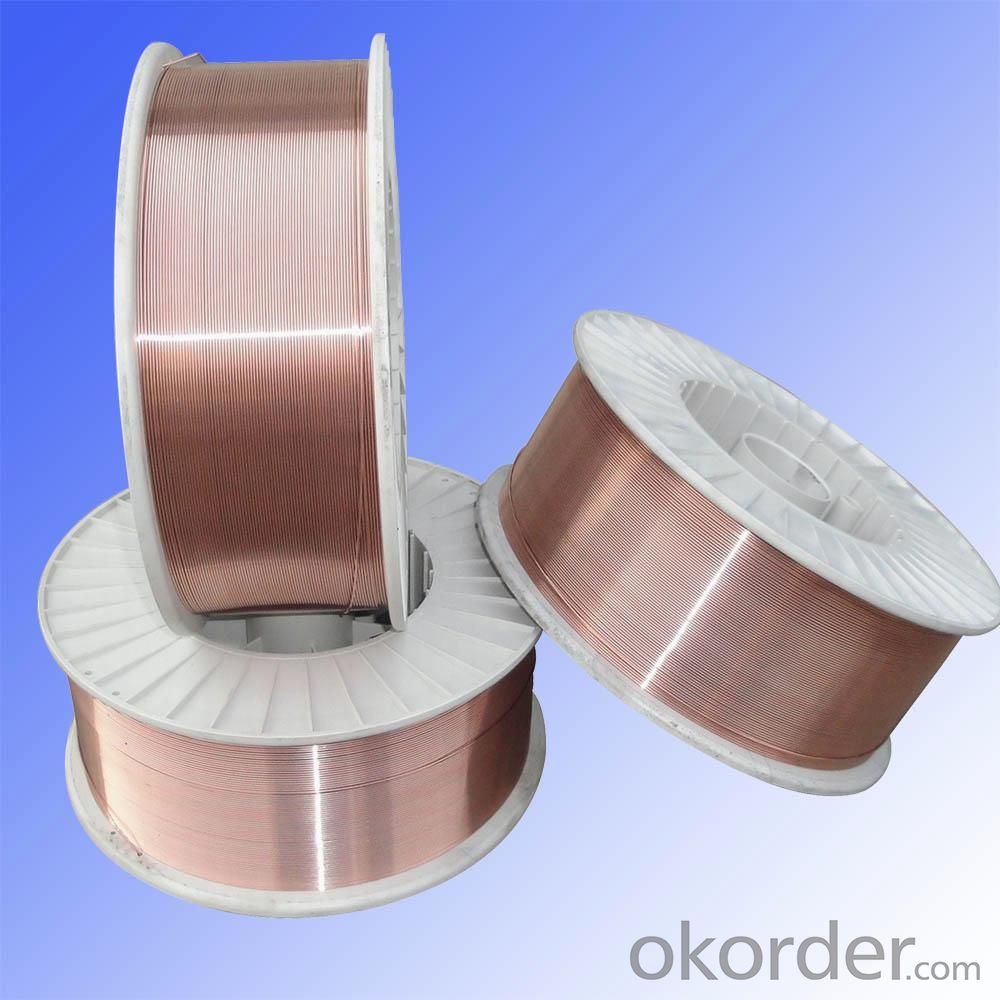
- Q:Is stainless steel wire suitable for architectural mesh applications?
- Indeed, architectural mesh applications greatly benefit from the use of stainless steel wire. Stainless steel, as a versatile material, possesses exceptional corrosion resistance, durability, and aesthetic appeal, rendering it a widely favored option for architectural purposes. With its strength and malleability, the wire enables the creation of intricate designs and patterns that enhance the aesthetic value of buildings and structures. The utilization of stainless steel wire in the production of architectural mesh presents numerous advantages. Firstly, it offers a remarkable level of transparency while ensuring privacy and security. The mesh can be woven in a myriad of patterns and densities, allowing for varying degrees of openness and visibility. This versatility makes it ideal for applications such as facades, partitions, sunshades, and cladding systems. Furthermore, stainless steel wire mesh exhibits exceptional durability and longevity, even when exposed to harsh environmental conditions. It remains resistant to corrosion, UV radiation, and fire, thereby preserving its structural integrity and aesthetics over time. Such longevity makes it a suitable choice for both indoor and outdoor applications, including building facades, ceilings, and decorative elements. Moreover, stainless steel wire mesh can be tailored to accommodate specific design requirements. It can be woven into various shapes, sizes, and patterns, empowering architects and designers to fashion unique and visually captivating structures. Additionally, the mesh can be coated or colored, providing further customization possibilities. In summary, stainless steel wire stands as an ideal material for architectural mesh applications due to its corrosion resistance, durability, customization options, and aesthetic appeal. It encompasses a fusion of functionality and visual allure, making it the preferred choice for architects and designers engaged in diverse architectural projects.
- Q:Is stainless steel wire resistant to bending and kinking?
- Yes, stainless steel wire is generally resistant to bending and kinking. Stainless steel is known for its high strength and durability, making it less prone to bending or kinking compared to other materials. The alloy composition of stainless steel, which includes chromium and nickel, contributes to its excellent resistance to corrosion and mechanical stress. This makes stainless steel wire a popular choice in various industries, including construction, automotive, and electrical, where resistance to bending and kinking is crucial for the wire's performance and longevity. However, it is important to note that extreme or excessive force can still cause stainless steel wire to bend or kink, so proper handling and application should be considered.
- Q:What's the difference between stainless steel screws and carbon steel screws?
- 1: popular speaking, carbon steel screws did not specially add alloy elements of steel, stainless steel screws for rust prevention and add high alloy content of steel.2: stainless steel screws are more expensive than carbon steel screws.
- Q:How does stainless steel wire compare to galvanized wire?
- Stainless steel wire and galvanized wire have different compositions, properties, and functions, although they are commonly used in various applications. Stainless steel wire is produced from a steel alloy mixed with chromium and sometimes other elements like nickel or molybdenum. It possesses outstanding resistance to corrosion, making it ideal for use in harsh environments or situations where exposure to moisture or chemicals is a concern. Additionally, stainless steel wire is highly durable and has a strong tensile strength, making it suitable for heavy-duty applications. Conversely, galvanized wire is created by coating regular steel wire with a layer of zinc. While this coating provides a protective barrier against corrosion, it is not as effective as stainless steel. Galvanized wire is frequently employed in outdoor applications where moderate corrosion resistance is necessary, such as in fencing, construction, and agriculture. In terms of appearance, stainless steel wire has a shiny and metallic finish, whereas galvanized wire has a duller, grayish appearance due to the zinc coating. Furthermore, stainless steel wire is generally more expensive than galvanized wire due to its superior properties and higher production costs. Both types of wire have their own advantages and disadvantages, and the choice between stainless steel and galvanized wire depends on the specific application and requirements. If corrosion resistance, durability, and strength are crucial factors, stainless steel wire is the preferred option. However, if moderate corrosion resistance and cost-effectiveness are the primary considerations, galvanized wire may be more suitable.
- Q:What is the difference between the spring stainless steel wire, the fog and the bright surface?
- Bright stainless steel wire is usually drawn by cold drawing. The stainless steel wire is made by cold drawing and then treated by chemical passivation, so the price is higher.
- Q:What is the electrical conductivity of stainless steel wire?
- The electrical conductivity of stainless steel wire can vary depending on its composition and properties. Stainless steel is generally considered to have lower electrical conductivity compared to other metals such as copper or aluminum. This is primarily due to its higher resistance to the flow of electric current. However, stainless steel wire can still conduct electricity to a certain extent, making it suitable for various applications where electrical conductivity is not a critical factor.
- Q:Can stainless steel wire be used for making fishing hooks?
- Indeed, fishing hooks can be created using stainless steel wire. The durability, strength, and corrosion resistance of stainless steel make it a favored option for crafting fishing hooks. The mighty tensile strength of stainless steel wire guarantees that the fishing hooks can endure the pressure and strain involved in capturing fish. Furthermore, stainless steel possesses rust and corrosion resistance, enabling its suitability for deployment in saltwater surroundings where fishing hooks often encounter moisture and salt. This attribute contributes to elongating the lifespan of the fishing hooks and preserving their keenness. All in all, stainless steel wire emerges as a dependable and fitting material for manufacturing fishing hooks.
- Q:Can stainless steel wire be used for wire strainers?
- Yes, stainless steel wire can be used for wire strainers. Stainless steel is a durable and corrosion-resistant material, making it ideal for use in wire strainers that require strength and longevity.
- Q:What kind of material is stainless steel drawing stainless steel? What are the main advantages and disadvantages?
- The advantages of the so-called oil grinding sand drawing sand is that the surface is more delicate, the visual effect is relatively better, better rust resistance, and other physical properties have not changed, the disadvantage is that the processing price is relatively high. If you do not require high selection of domestic grinding machine, because the water gas will rust. Stainless steel can also rust.
- Q:What's the effect of soapy water used to soak stainless steel wire?
- If you look carefully, the bubbles will be colorful in the sun. This is because the sun is actually a colorless: seemingly complex light consists of red, orange, yellow, green, green, blue, purple and other seven kinds of monochromatic light, if somewhere in the soap film that two shares of the reflected light offset, in this place can not see the red and blue green. The same way, in the other part, a light has been strengthened, showing is another color. Soap bubbles are made of a thin layer of transparent cellophane, and when the sun shines on the soap film, it reflects both inside and outside.
1. Manufacturer Overview |
|
|---|---|
| Location | |
| Year Established | |
| Annual Output Value | |
| Main Markets | |
| Company Certifications | |
2. Manufacturer Certificates |
|
|---|---|
| a) Certification Name | |
| Range | |
| Reference | |
| Validity Period | |
3. Manufacturer Capability |
|
|---|---|
| a)Trade Capacity | |
| Nearest Port | |
| Export Percentage | |
| No.of Employees in Trade Department | |
| Language Spoken: | |
| b)Factory Information | |
| Factory Size: | |
| No. of Production Lines | |
| Contract Manufacturing | |
| Product Price Range | |
Send your message to us
Brass Steel Welding Wire/ Strip for Construction
- Loading Port:
- Qingdao
- Payment Terms:
- TT or LC
- Min Order Qty:
- 10 m.t.
- Supply Capability:
- 1000 m.t./month
OKorder Service Pledge
OKorder Financial Service
Similar products
New products
Hot products
Related keywords

